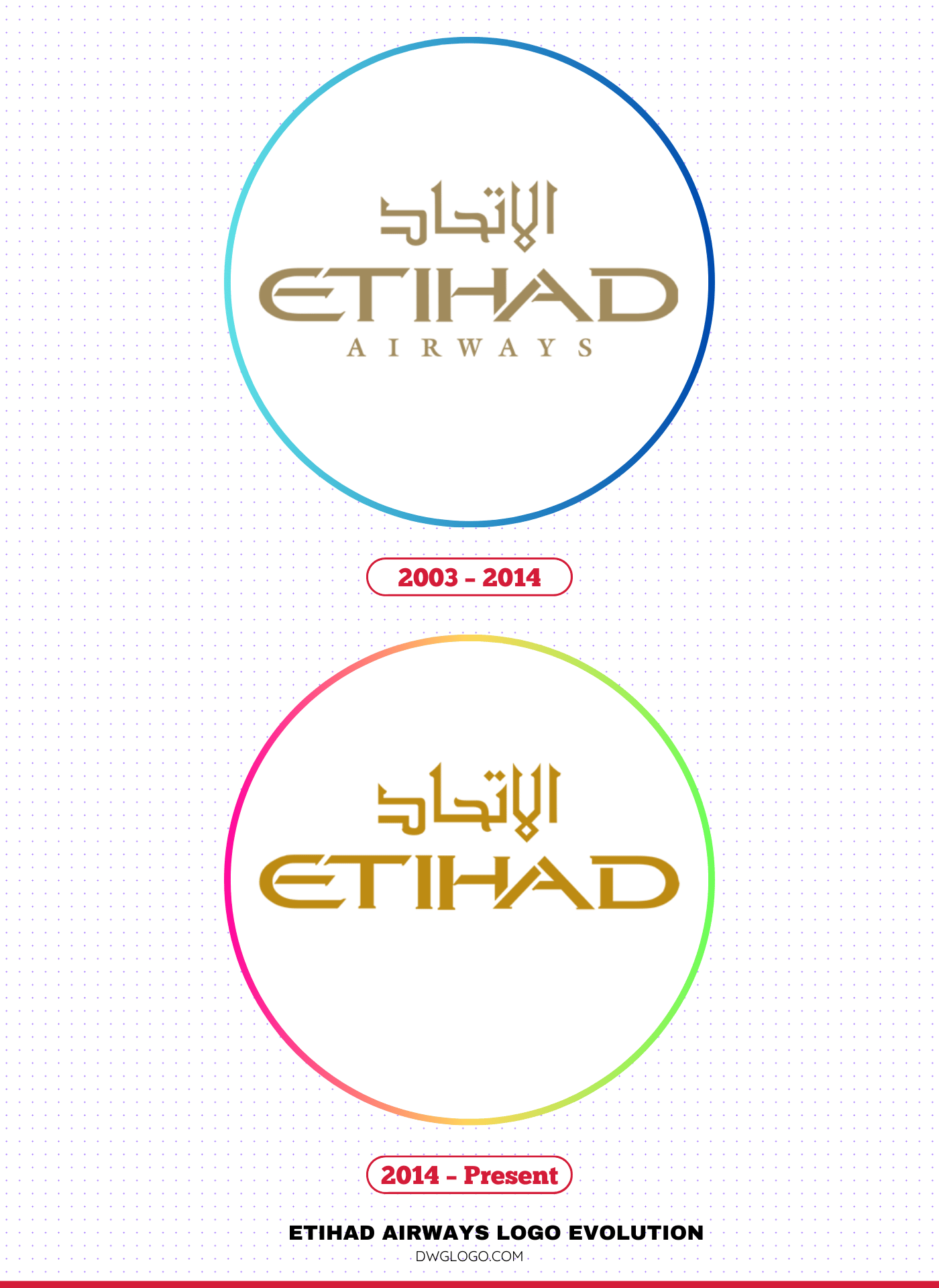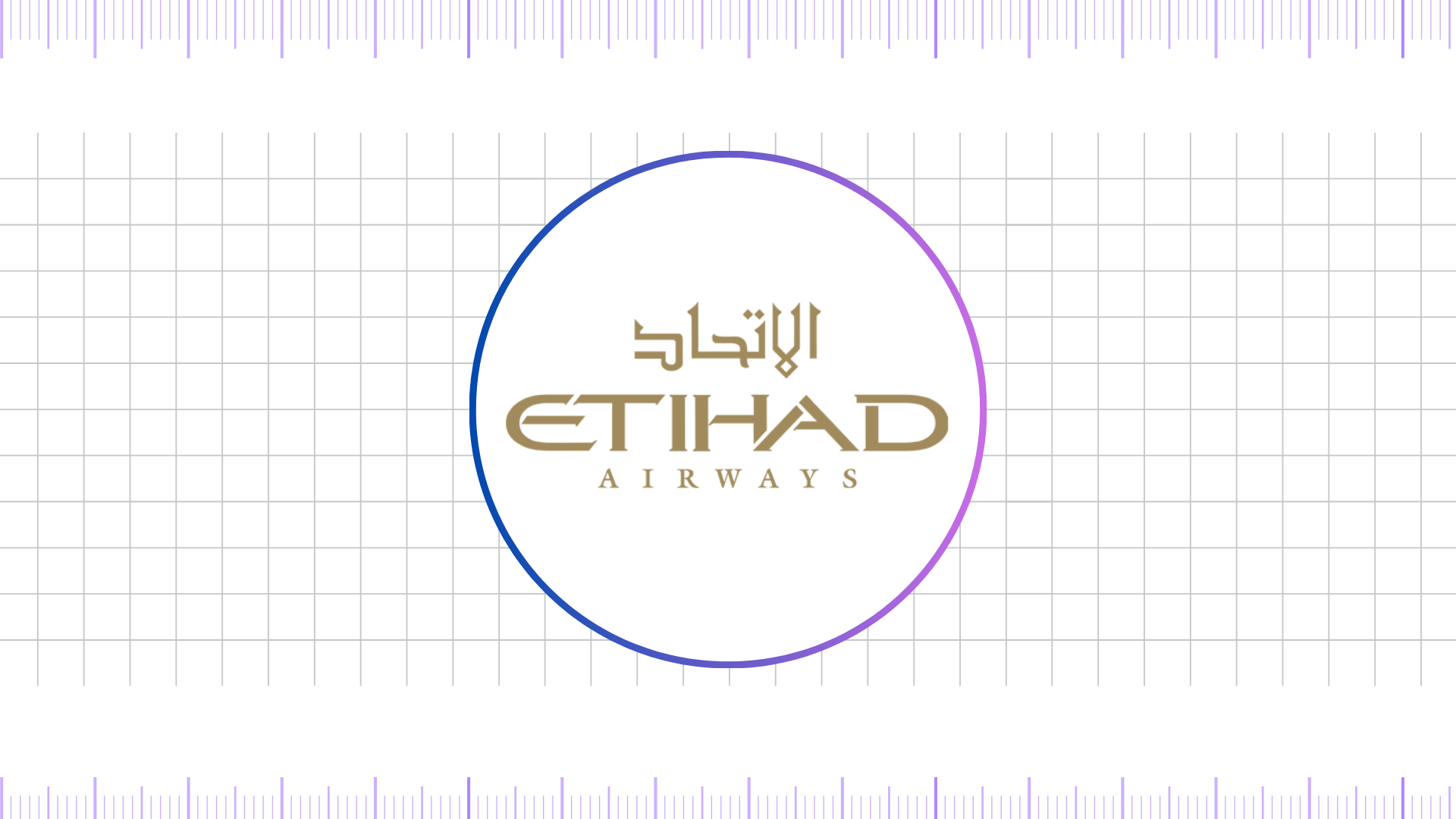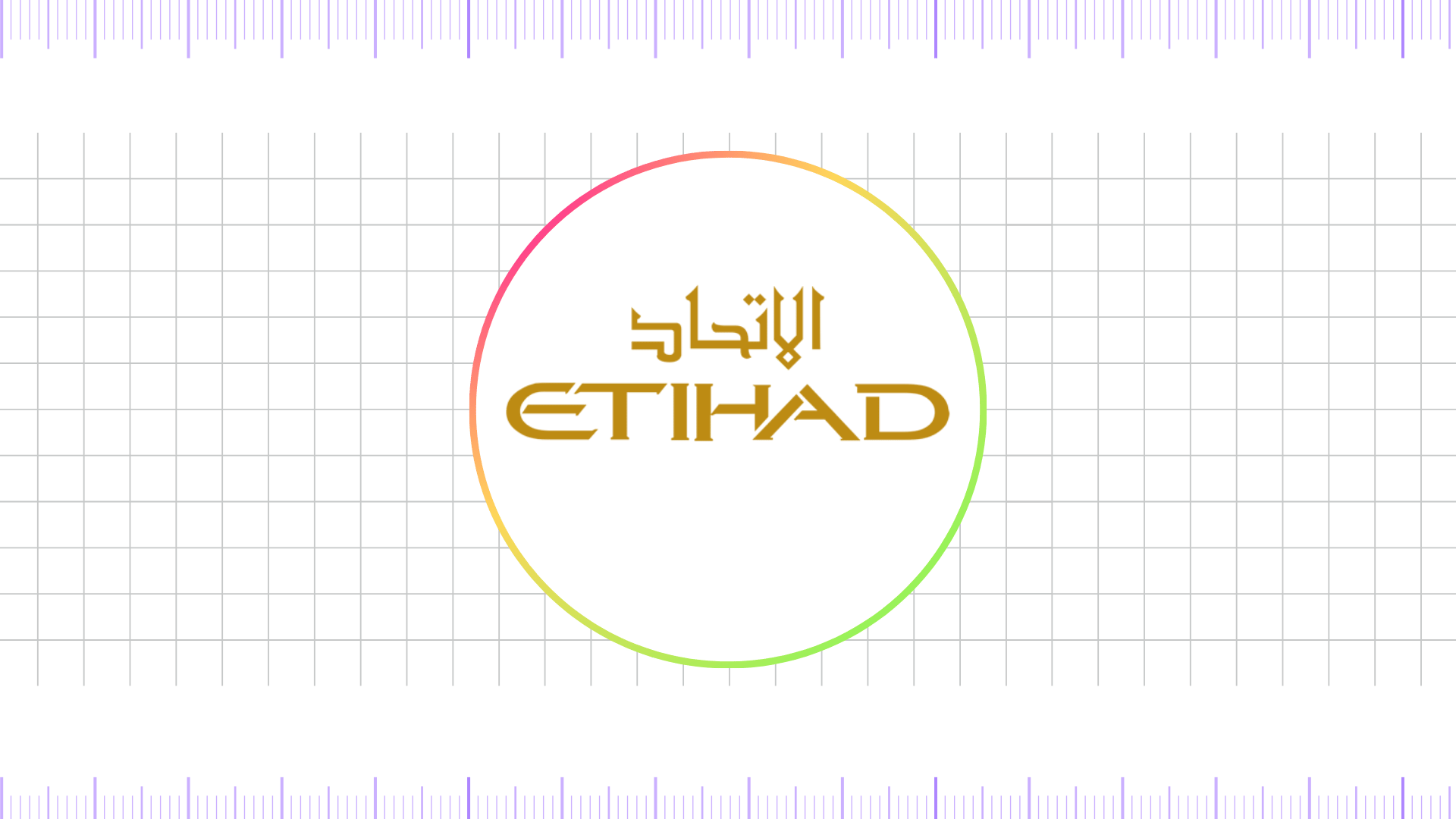The brand identity of Etihad Airways has undergone a significant transformation, evolving from a classic, nationalistic emblem to a modern, luxurious, and culturally resonant design. This evolution reflects the airline’s maturation and its strategic shift towards positioning itself as a global leader in premium air travel.
Etihad Airways Logo Evolution
2003 – 2014
From its inception in 2003 until 2014, Etihad Airways’ logo featured a traditional design that was deeply rooted in national symbolism. The logo consisted of a stylized eagle, a prominent symbol of the United Arab Emirates, with the airline’s name written in both English and Arabic.
The font used for the English name was a classic serif typeface, conveying a sense of heritage and formality. The color palette was dominated by a rich maroon, gold, and green, directly inspired by the UAE’s national colors.
This visual identity was professional and respectable, yet it aligned with a more conventional airline branding approach, similar to many other flag carriers. The design effectively communicated its status as the national airline but lacked a distinct, modern edge that would differentiate it in a competitive global market.
2014 – Present
In 2014, Etihad Airways underwent a complete brand overhaul, introducing a new logo and livery known as the “Facets of Abu Dhabi.” This rebranding, created by the design consultancy Landor Associates, marked a pivotal moment for the airline. The new logo discarded the eagle motif in favor of a contemporary, abstract design.
It consists of a triangular, mosaic-like pattern that resembles the intricate geometric patterns found in traditional Emirati architecture and the shifting sands of the Abu Dhabi desert. The font was also changed to a bespoke, streamlined sans-serif typeface, reflecting a more modern and innovative character. The new color scheme is a sophisticated blend of metallic gold and shades of brown, beige, and sand, directly referencing the desert landscape.
This shift from national colors to a more nuanced, earth-toned palette underscores a focus on luxury and a unique sense of place. The current logo and livery are not just corporate symbols; they are a visual narrative of Abu Dhabi’s heritage and its status as a forward-thinking global hub.
FAQ’s
What is the meaning behind the new Etihad logo?
The new logo, known as the “Facets of Abu Dhabi,” is inspired by the geometric patterns of traditional Emirati architecture and the diverse hues of the desert landscape. It’s a visual representation of the airline’s luxurious identity and its connection to its home.
What is the font used in the new Etihad logo?
The font is a custom-designed sans-serif typeface created specifically for the brand, complementing its modern and sophisticated visual identity.
Final Thoughts,
Etihad’s logo evolution from 2003 to 2014 reflects a strategic shift from a national carrier to a global luxury brand. The transition from a traditional eagle motif to the “Facets of Abu Dhabi” design successfully positions the airline as a sophisticated, culturally-rooted, and forward-thinking leader in premium air travel, a move that aligns its visual identity with its service excellence.
Reference: [1]


